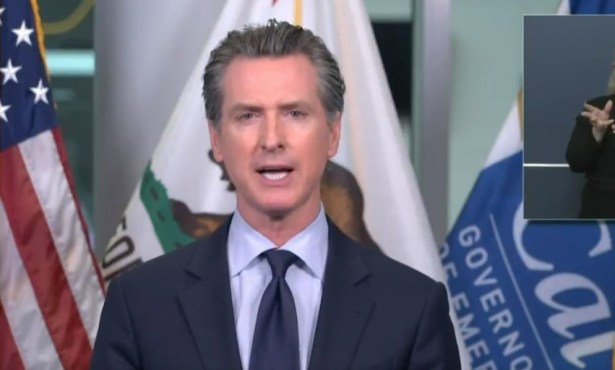Stretch Run
Brown-Whitman’s Neck-and-Neck Race Will Come Down to Economics and Turnout
High-paid political consultants just love to make their work sound complex, mysterious, and beyond the ken of mere mortals. But the bottom line is that every electoral campaign always boils down to three basic elements: message, money, and mechanics.
Eight weeks before the November 2 election, California’s crucial race for governor between Democrat Jerry Brown and Republican Meg Whitman is too close to call. Here’s a look at where things stand on the key measures of their campaigns.

MESSAGE: After months of playing political rope-a-dope, laying low while Whitman pounded him with $24 million of ads over the summer, Attorney General Brown finally emerged in campaign mode over Labor Day, airing his first TV spot and making speeches around the state.
In a series of appearances before union groups, he sounded populist themes, portraying his GOP foe as a tool of Wall Street and arguing that her proposals for tax cuts on capital gains and for the wealthy would not only expand the growing gap between the richest one percent of the population and everyone else but also worsen the state’s chronic deficits: “This is not a time to be driving a bigger hole to take care of the most powerful and the most affluent people in the world.”
Whitman turns Brown’s argument on its head, arguing that her proposed tax cuts will stimulate the economy and increase revenues, saying that California’s fiscal problems are largely due to excessive wages, benefits, and pensions received by public employees. Calling for 40,000 layoffs of state workers, she charges that Brown is a wholly owned subsidiary of organized labor: “Jerry Brown has outsourced his campaign to the government unions, and if he’s elected, they’ll get exactly what they want.”
Advantage: Toss-up.
MONEY: A sage California campaign operative famously said that a political rally in California is two people sitting in front of a television set. Whitman has totally dominated the airwaves since the beginning of 2010, having already spent over $105 million of her own money, while receiving millions more largely from the financial and investment industry. She may write another $50 million in personal checks before it’s over.
Brown, who hopes to have about $30 million to spend between now and November, appears to have won his risky bet that he could husband his resources through the summer and not respond to Whitman’s attacks, leaving that job to union-dominated independent expenditure committees, which ran about $8 million worth of advertising on his behalf. The money Brown has on hand gives him $2-$3 million a week to spend in the two months left in the campaign, which should keep him competitive.
Advantage: Whitman.
MECHANICS: Beyond TV, Whitman’s huge financial advantage allows her to run a lavish statewide effort reaching out to likely voters with a host of other tools, like slick direct mail, social media, phone-bank and vote-by-mail operations, and highly sophisticated polling that enables micro-targeting of narrow demographic slices of the population. She also has given the state Republican Party several million dollars for a registration and get-out-the-vote effort to benefit the GOP’s entire statewide ticket.
Brown, however, enjoys the natural advantages of the Democrats’ double-digit registration edge, as well as the benefit of ground troops, in the form of labor organizations and other parts of the party’s base, including minority, women, and environmental organizations.
Advantage: Brown.
BOTTOM LINE: In the end, the election will be won by the campaign that is most successful in motivating its base voters. The nation’s leading polling data prognosticator is Nate Silver, who writes the “Five Thirty Eight” blog for the New York Times; His latest projection, based on analyzing and weighting a range of public opinion surveys, forecasts that Whitman will eke out an extremely narrow victory, 49.2-48.8 percent, over Brown.
SENATE SWEEPSTAKES: In a hard-hitting debate last week, incumbent Democrat Barbara Boxer and Republican challenger Carly Fiorina, battling for a seat that could decide which party controls the U.S. Senate, sounded similar themes.
Boxer said Democrats had pulled the nation from the brink of economic disaster caused by Republican policies and bashed Fiorina for laying off 30,000 American workers while CEO of Hewlett-Packard: “She was proud as she stamped ‘Made in China’ on her products.”
Fiorina attacked Boxer for big-government tax-and-spend programs she said are bankrupting the country: “Barbara Boxer’s failed economic policies are so ineffective she can’t even save the jobs of her biggest supporters: big labor.”
Silver’s latest line says Boxer has a 59 percent chance of holding the seat. But that’s why they have horse races.



